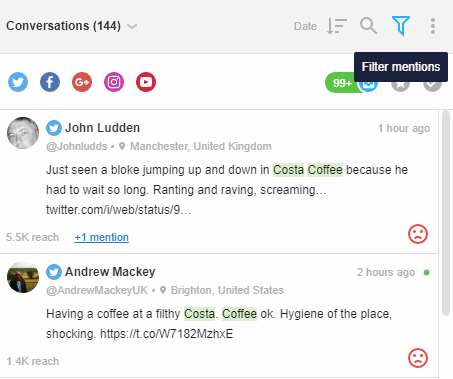Negative reviews and complaints: how to respond like a pro

It’s no secret that the buying journey happens these days very differently from how it used to be ten years ago. According to the Retail Report, 81% of shoppers conduct online research before making big purchases. Before choosing a restaurant to go to, most will look through online reviews. Even if the customer is already in the shop and suddenly, out of nowhere, wishes to buy a product of an unknown brand (the very definition of impulsive buying!), she will take a minute to do a quick brand search on her smartphone. And unless your company was started a week ago, the search will show some results.
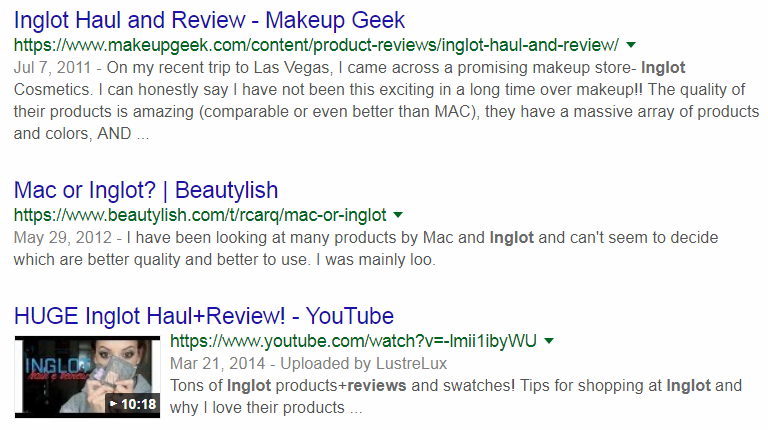
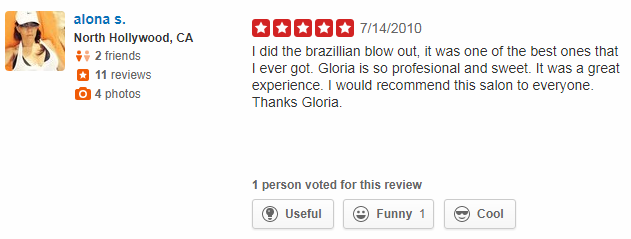
Your job as a marketer is to make sure the image of your brand that appears online is the one you want it to be. How, though, can you do that if most reviews and online mentions are user-generated? And, no matter how great your product is, there will always be some issues that will leave someone unhappy. Besides, we know that customers write positive reviews much less often than negative ones. People take it for granted if the product lives up to their expectations, and get very upset and very vocal if the product doesn’t. So there probably are negative reviews and complaints online that are spoiling your image, and that might stop your potential customers from buying your product.


When faced with this situation, marketers usually choose one of three approaches:
1. “If we don’t know about the negativity on the Internet, it’s like it doesn’t exist.”
2. “There isn’t anything we can do. Let’s hope no one will see/care about this.”
3. “Let’s write loads of fake good reviews to keep the balance!”
As you might imagine, neither of these is a good approach. So what instead should your course of action look like when it comes to online mentions?
1. Use social media monitoring to see negative reviews, news stories & complaints on social media and the Web
Obviously no matter how violently you ignore negativity on the Internet, it still exists. The least you can do is acknowledge the problem and recognize the opportunities behind it. Thing is, negative mentions often present even bigger opportunities than the positive ones. They give the company a reason to show off the level of their customer service to the wide target audience and also to show “the human face” of the company. At the same time, with positive mentions and reviews users are never sure if what they are seeing is a real customer’s opinion or a fake one. And we even know why that is :) .
Besides, more often than not users truly appreciate when the company engages in a conversation with them and tries to solve the problem. As a “thank you”, they might change their review to a positive one, or write a social media post about how great your company turned out to be.
After you’ve found all negative mentions on social media and the Web, do the following:
2. Know whether to respond or not

As someone working with social media, you should be able to recognize trolling. If the user’s profile or website is dedicated solemnly to making other people’s lives harder, feel free to ignore it.
If the mention is inflated or rude, also feel free to ignore it. However, if you’ve got time and desire to get the most out of it (and if the situation is suitable!), try being funny. This approach depends heavily on the situation, so be careful. If done badly, the response can cause more harm than good, if done well - the conversation can go viral and bring you new followers.
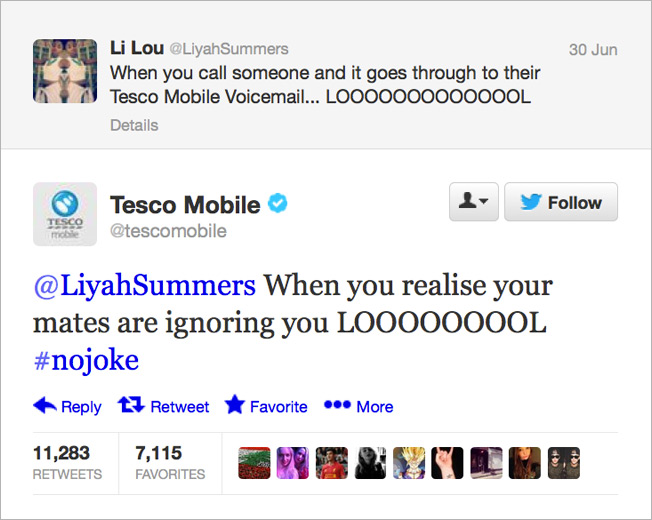
3. Respond ASAP [if the mention is found on social media]
Do your best to respond quickly. According to this survey, out of people who have attempted to contact a brand’s customer support channel through social media, 32% expect a response within 30 minutes. A further 10% expect a response within 60 minutes. This is not that vital if the mention is a complaint rather than an issue that has to be resolved quickly, but it’s always nice to show the customers and all of their followers that you’re listening to them and that you care about their opinion. Also, according to an NM Incite survey, 33% of respondents would recommend a brand that offered a quick but ineffective response, while only 17% would recommend a brand that offered a slow but effective solution. It’s weird, but it’s true!
4. Apologize/Explain the situation/Fix the facts
If the customer who left the mention or the review is genuinely upset, it’s necessary to apologize, no matter how wrong the customer is. Saying sorry goes a long way. Act polite and humble whatever happens.
However, if the customer presents the case to the public that you can prove is wrong, do your best to fix the facts. For example, when she assumes you've got no Lady Gaga when OF COURSE you do.
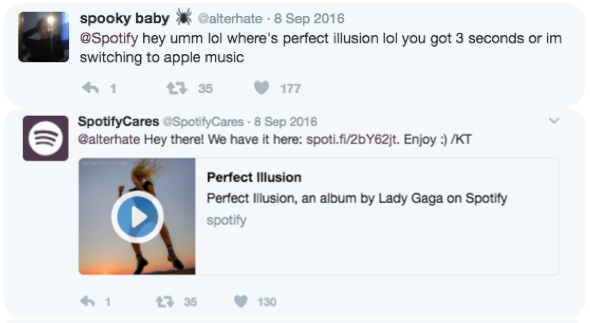
Or when you can explain the situation and, consequently, make the customer feel better about themselves.
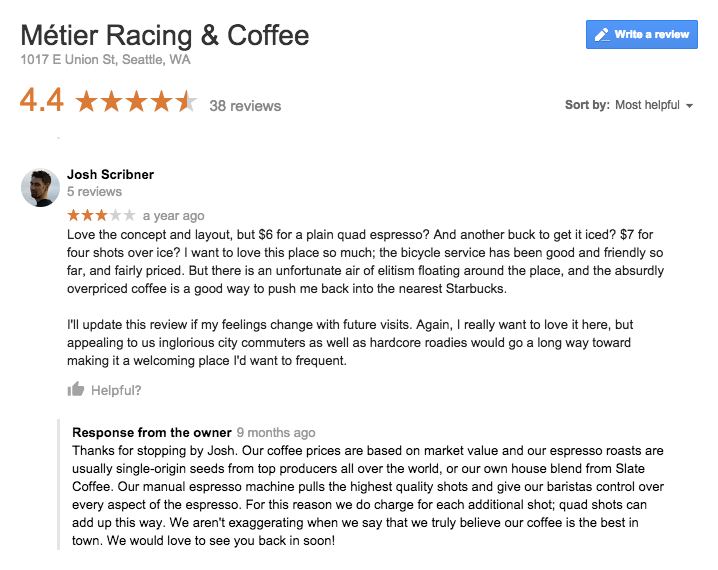
Don’t delete any negative comments or reviews. You’re only allowed to delete comments that are clearly spam or in violation of posted community guidelines. Other than that, social media is about being transparent, and with every deleted mention the level of trust for your company declines. What else are you hiding, they are wondering.
5. Know when to take the conversation to a private dialogue
The primary purpose of responding to negative mentions online is showing other internet users that you care. However, sometimes issues aren’t resolved that quickly: the authors of mentions get argumentative, and before you know it, you’re engaged in a lengthy public conversation about guns, Trump, and the collapse of the Austro-Hungarian empire.
Do your best to prevent the situation: offer the customer to contact them by phone or e-mail to facilitate the problem-solving process.
6. Know when to reply to a group
In case there’s been an issue that has affected many people, or a full-blown social media crisis, don't reply to every customer individually. In no case start copy-pasting responses. Instead, provide official public status updates on the issue.
Here’s a more detailed guide on how to handle a social media crisis.
7. Engage with your customers [if the mention is found on social media]

I’m sure you hear that a lot, but social media isn't like all your other marketing channels. Its main goal isn't promotion, it's customer service and brand awareness. While surely it's easier to engage with people that praise your products or ask relevant questions that make it easy for you to show off your expertise, negative mentions are the ones that call for the most engagement. Talk to people, find out what went wrong even if you know you won't be able to help. Or, engage in a friendly banter, depending on the nature of the problem and the image of your brand. Remember, attention is the rarest and purest form of generosity.
How do you handle negative mentions on the Internet? Share your ideas and experiences in the comment section below!

